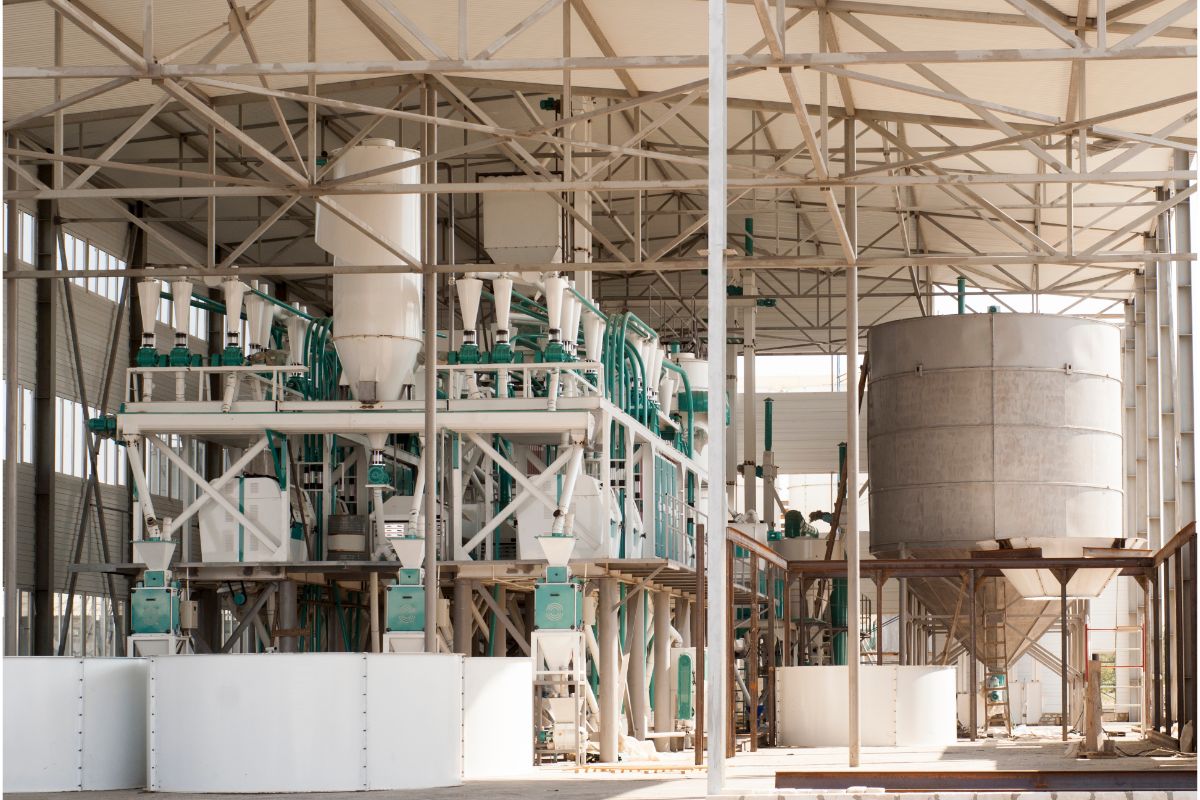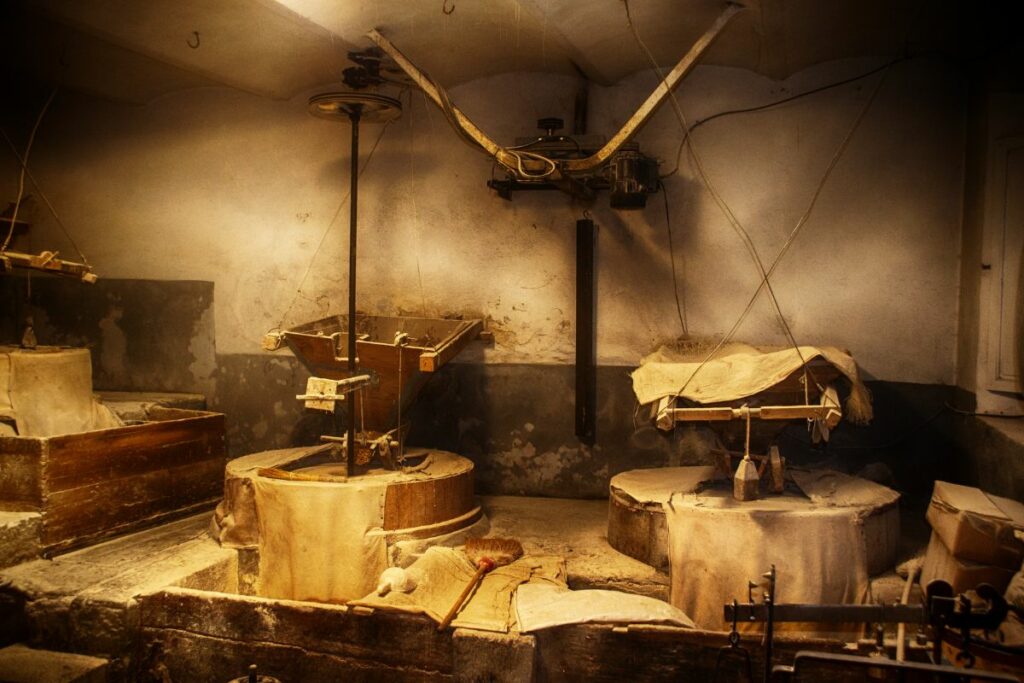Wheat and flour are among the oldest crops cultivated by humans. Archaeological evidence suggests that people began cultivating cops about ten thousand years ago.
By around eight thousand BC, farmers had begun growing domesticated forms of wheat, barley, rye, and oats. These plants were selected because they could grow well under dry conditions and produce large yields.
Flour milling dates back to approximately 8500 BC. This process involved grinding grain into meal, which allowed for better storage and transport. In addition, the finer particles of flour enabled bread to rise more quickly.
In the Middle Ages, mills became increasingly common. They were often powered by waterwheels, windmills or animal power.
Mills continued to evolve throughout history, becoming more efficient and producing greater quantities of flour. Today, most flour produced in the United States is milled in electric mills.
Ancient History
Bread has been eaten for thousands of centuries, but it wasn’t until yeast and leavening agents were created that people could bake loaves of bread rather than just cook them.
In Ancient Egypt, bread was baked in clay pots and then served hot. Ancient Greeks used an oven made of mud bricks, and Roman bakers used wood fired brick ovens.
The earliest known evidence of bread being baked in a metal pan dates back to about 1000 BC. Around 300 AD, the Chinese invented a type of doughnut shaped loaf.
They also developed a method of kneading dough by pulling it between two rollers.
In ancient times, people did not have access to modern milling equipment. They had to grind grain manually. This took many hours of labor.
To speed up the process, they used stones and pestles. These tools were very effective, but they were difficult to use and expensive to replace.
In ancient times, people used to grind wheat berries into a fine meal and then mix them with water to make bread.
To separate the bran from the endosperm, they would put the mixture in a basket woven out of straw and place it between two stones.
After a period of time, the bran would fall through the holes in the basket and the endosperm remained behind.
The bran was dried and stored for later use. When the grain was needed again, it was soaked overnight in fresh water and then boiled until soft.
Then the bran was removed, and the remaining endosperm was milled into a finer meal. The resulting meal was called “farina” (Latin for “fine meal”).
Farina was often mixed with salt and water to create a kind of gruel known as “oatmeal”.
The invention of the watermill changed everything. Watermills are much easier to operate than stone mills, and they produce far less noise. In addition, they did not require constant maintenance like stone mills.
19th Century Milling
As industry gradually adapted to new technologies and the need for cheap energy sources, the shift from mills located near large cities to smaller towns where cheaper power was available became increasingly common.
By the late 19th century, most major cities had lost their status as primary mill locations.
The New Process was first introduced in Hungary in the mid-19th-Century. It involved setting the mill stones further away from each other so they would pull apart rather than crush the grain.
They also reduced the speed of the millstone rotation to slow down the grinding process and to prevent overheating.
Grinding with stone soon became highly proficient, milling at extraction rates were able to make about 72% of the product and 28% of the rest. There were fewer workers needed as a result.
By 1870, the average mill had fewer than three employees. Flouring mills are probably among the earliest industrial processes ever invented.
They are certainly the first ones to be completely mechanized. But more machines meant fewer jobs and losses in certain places.
Consequences Of Introduction Of Mechanical Equipment
The story of the rise and fall of Minneapolis’ flour milling industry begins in 1854, when the first sawmill opened along the Mississippi River near what is now downtown Minneapolis.
By 1860 there were about 30 such mills operating in the area, most of them small operations owned by local farmers.
By 1870, however, the number had grown to nearly 200, and many of those were large enterprises controlled by absentee owners.
They employed thousands of workers, processed millions of bushels of wheat each year, and produced some of the finest flour in the world. But they were not profitable.
In fact, the industry was losing money hand over fist, and it wasn’t long before the owners began looking for ways to cut costs. One way was to replace human labor with mechanical equipment.
Another was to build larger mills capable of processing more grain. And still another was to move production away from the river and into dry land.
Those changes helped make Minneapolis one of America’s leading cities during the late 19th century. But they also spelled doom for the old mill towns that once dotted the landscape.
20th Century Milling
In more recent times, grain arrives at modern mills and warehouses by boat, barge, train, or truck. Chemist inspectors check and sort the grain into different grades. They take samples from each shipment for testing.
A small quantity of wheat is milled into flour. The character of the grain determines how it is processed.
Different varieties of wheat are blended together to produce various products. For example, whole wheat breads can be made from a combination of white and brown flours.
Flour Mills Today

There are two main types of flour mills: horizontal roller mills and vertical shaft mills. Both types of mills use different methods of grinding grain into flour. Let’s look at both types of flour mills, their advantages, and disadvantages, as well as some other important aspects about them.
Horizontal Roller Mill
A horizontal roller mill uses rollers to grind grains into flour. These rollers can be made from steel or stainless steel.
Steel rollers are more durable than stainless steel ones. Stainless steel rollers are expensive, but they last longer.
Horizontal roller mills are used mainly for making white flour. White flour is the most common type of flour because it contains less protein than whole wheat flour.
It also has a lighter color, which makes it easier to blend with other flours.
Advantages
- They are very efficient at grinding grains into flour. This means that you do not need much energy to run these mills.
- They are relatively inexpensive.
Disadvantages
- They cannot process hard grains such as corn, oats, barley, rye, etc.
- They require frequent maintenance.
Vertical Shaft Mill
A vertical shaft mill uses a rotating cylinder inside a stationary housing. The cylinder rotates around its axis while being pressed against the inner wall of the housing.
Grains are fed through an opening on top of the cylinder, where they get crushed by the moving cylinder.
Vertical shaft mills are usually used to make brown flour. Brown flour is considered to be healthier than white flour. It is also cheaper to produce than white flour.
Advantages
- They are able to process all kinds of grains including hard grains like corn, oats, barley, and rye.
- They are more reliable than horizontal roller mills.
- They do not require much maintenance.
Disadvantages
- They are more expensive than horizontal roller mills.
Conclusion
The history of milling is one of constant change and development. As technology advances we have seen the introduction of new products, new processes and even new ways of doing things. The future of milling is no exception.
With the advent of new technologies, we may see the disappearance of some traditional mills and the emergence of others.








